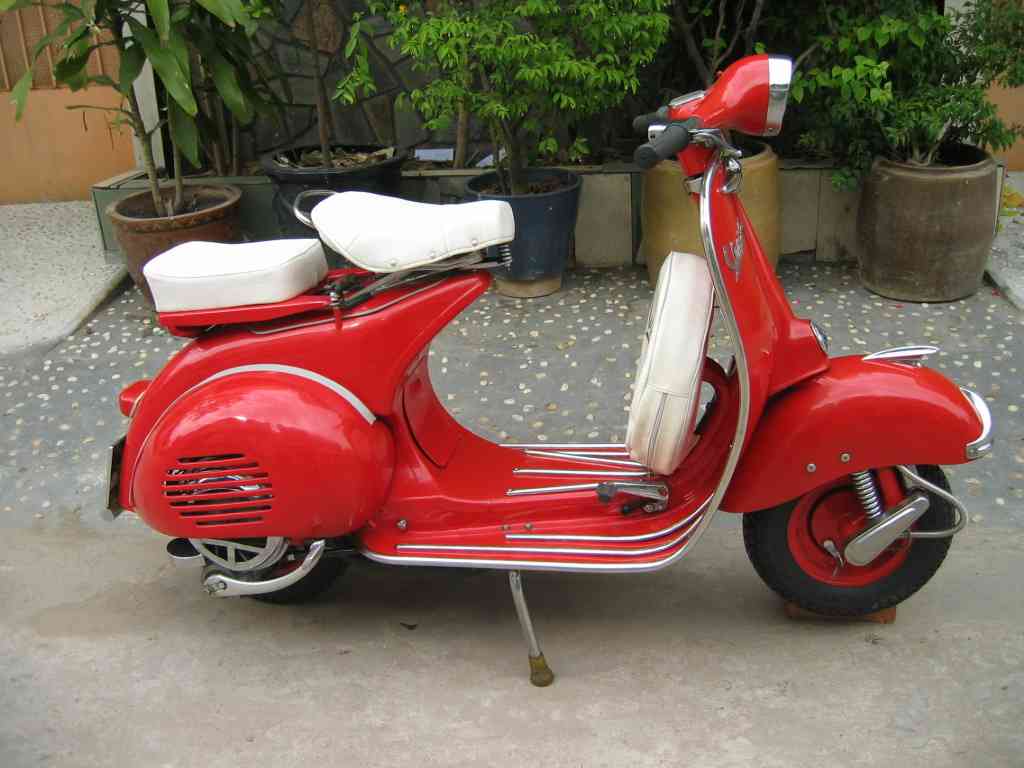The 1965 Sprint was a smaller-bodied scooter with a distinctive, rectangular headlamp and a peppy, sport-tuned engine. It shared a small-frame design with Primavera bikes, both of which lacked the wide rear bodies seen on most other scooters; those bikes still remain popular with collectors today.
NEW YORK (TheStreet) — The financial community is obsessed with colorful charts. If you put together a historical chart on something and infuse it with bright colors, BOOM there go the retweets and Klout-boosting favorites on Twitter. The infatuation with Apple (AAPL) iPad life-to-date unit sales charts is intense, so are the total number of acquisitions made by Google (GOOG) since a given year. Don’t get me going on the sexy charts showing how many electric autos Tesla (TSLA) sold in a quarter compared to General Motors (GM) and Ford (F). In reality, I suppose the social love makes the effort of chart compilation worth the hours, no?
Yet the Sprint drives remarkably quietly; carry a passenger behind you on the seat and you can talk at normal levels even while zipping down a street. It idles quietly too, perhaps one way Piaggio was able to coax 117 mpg out of it. Fill the tank (just 2.1 gallons) and you could in theory drive from New York to Boston on one tank of gas.
“This is the combination of my three favorite things: pizza, World Cup soccer, and Vespas,” says Pagliacci Pizza Co-Owner Matt Galvin. “ I think our customers will enjoy the chance to win a Vespa by eating pizza while they are watching World Cup soccer!”
Next up in this personal mission of mine: scooters. The scooter industry is growing at approximately 20% a year. From the migration of human beings back into urban settings and their associated need for a space-efficient commuting machine, to a single millennial seeking to actually own a hard asset with low maintenance costs, the themes fueling the scooter industry are strong and likely sustainable for years to come. Amid those themes, major two-wheel producers Yamaha, Suzuki, and Honda (HMC) have all sought to release new models that resemble the motorcycles their names are synonymous with, boasting aggressive styling in a foot-forward riding experience. Unfortunately, not one of those companies has the rich history or charm of Piaggio Group-owned Vespa. Bottom line is that Vespa, since its first release of the 98cc in 1946, has always been a scooter company, not a motorcycle company (Piaggio does own motorcycle brands, such as Moto Guzzi, that do battle with Harley Davidson (HOG) in certain categories) posing as a scooter company.
The Sprint is a lot like every other scooter out there, to be fair. Yes, the designers work to customize them, but a generic look connects the frames of the entire family, from the classic shape of the LX series to the quirkier stylings of the new 946. The rounded, romantic curves of the 60s have been gradually sharpened over the years, leaving a familiar silhouette that’s nonetheless more angular than it once was, a basic fact that moves today’s bikes closer to generic rides from Honda than I’d like – the Sprint included.
